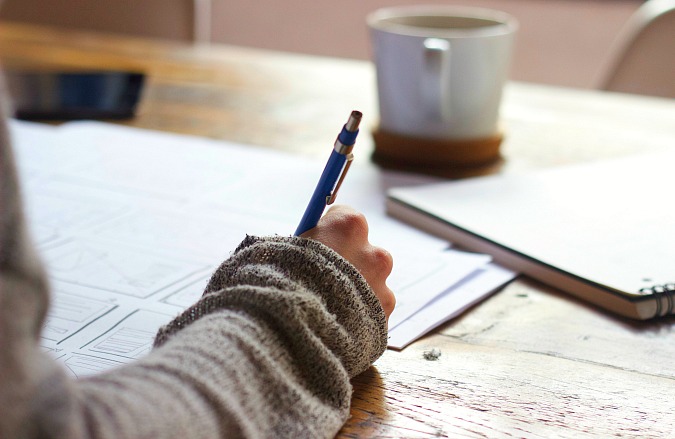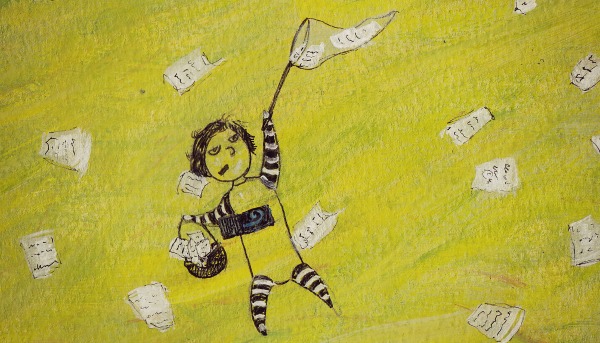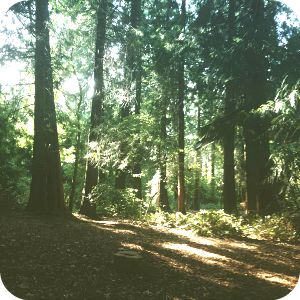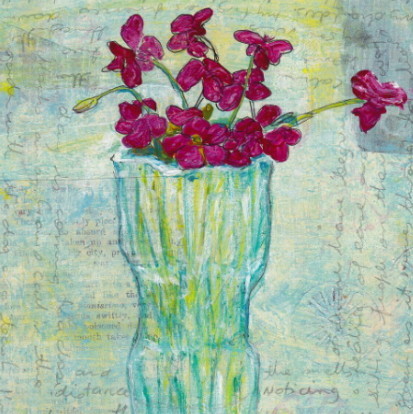“I have so many ideas that I’m lucky if I don’t trip over them each morning.”
J.S.Bach
I love the image of Bach tiptoeing through his room, over ideas strewn on the floor like discarded underwear. Isn’t that just how creativity works, too? Ideas are abundant. Having ideas is much easier than grabbing hold of them and bringing them into the world.
An Embarrassment Of Brilliance
When looking for a good metaphor it often helps begin with nature. And the abundance of creative activity in nature amounts to an embarrassment of brilliance: millions of eggs laid by sea turtles on a beach on a single night; galaxies bursting at the seams; countless fruit rotting under countless trees; the outrageousness of Spring where whole landscapes burst into bloom for a few weeks.
Maybe you’ve experienced one of those lazy days sitting in the garden, trees swaying, bees droning in the background as a s stream of creative ideas flow through your mind, only to be swept away as you fall into a nap. Or maybe your ideas arrive in the shower. Or you receive wild visions while stuck in traffic. You, too, are the conduit for an embarrassment of brilliance.
Like Bach, ideas are floating all around us like a rabble of butterflies. The next step involves action. We need to pick up an imaginary butterfly net and snatch the ideas we most resonate with, the ones we commit to working on.
Why It’s Hard To Move From Idea To Action
Once we commit to an idea it is removed from the safe bubble marked ‘daydream’ and we start to make a place for it in the real world. Undertaking this process means to risk mucking it up, or being ridiculed.
I have piles of notebooks that I keep in a red box, each one filled with sketches, doodles, ideas. I love that box. It’s like a bright red cocoon for my ideas. They sit there like fat little grubs, readying themselves for the day they’ll burst out into the world.
Flipping through my notebooks can be like walking through a butterfly pavilion.
I safely watch all my ideas and sketches from here, some more viable than others; there goes a lime green one floating up to the canvas ceiling, while another struggles to free its soggy orange wings from the edge of a water feature.
But this is an exercise in separation, too. I keep myself apart and safely view my ideas with both hands tucked into pockets to avoid squashing anything.
In Order To Create
We need to get involved, no more viewing from a distance, it’s time to pull out that net and commit.
Problem: you might find a sense of dread rising when it’s time to do that.
Sometimes, dread comes from the tension between the ideal version of the idea in your head and the flawed version which your limited abilities may actually produce.
And it’s true, the flaws will be there. Ideas are delicate things, their wings can be easily torn, they might not adapt well to a new environment. But the work of adding beauty and meaning to the world involves the realization that a lot of ideas just won’t make it. There’s no need to take that personally, it’s just the truth.
And the beauty and meaning we’re talking about there is the singular beauty and meaning that comes filtered through you, and your perfectly flawed life. That’s the flavor of your personal magic and only you can bring it into the world.
Leap Into Action
Here are some tips for moving from idea to creation. Let’s snatch these ideas as they float past, then do something with them.
Start Small
Small starts are a great way to build momentum. Once you begin the transition from ‘idea’ to ‘action’ it’s like adding oxygen to kindling. I’m an anxious starter and have learned over time to build in small, non-intimidating actions at the start of each project. For writing, a brief entry in your journal can work. For art, sharpening pencils, organizing paintbrushes, selecting the right paper can be enough to get you settled and ready to make those first few marks. Once you’re on your way your project starts taking over and sweeps any nervous energy away.
Get Present
Being in the moment is a great way to both open yourself up to inspiration, and to grab what the muse offers you and run with it. Being mindful and aware allows your perception to open out a little and gives inspiration more chance to strike. Noticing is a simple writing meditation that can help you get settled into the present moment and open to creative possibilities.
Inhabit Your Body
A great way to get in touch with your creative abilities is to move your awareness down into your body. Your body is a vessel of inner wisdom and connecting with your body allows you to sidestep the bustle of mental chatter. Things are quite here and there is space for wisdom and beauty to emerge.
A great way to bring awareness into your body is to let your feet be flat on the floor and imagine that you are breathing in and out through the soles of your feet. As you breathe do a simple body scan , moving your attention down from your head–to your throat, the center of your chest, belly, pelvis, knees, feet. Even a few seconds of this has a settling effect and you can feel the difference.
Fail Often
“Ever tried. Ever failed. No matter. Try again. Fail again. Fail better.”
Samuel Beckett
Lowering the stakes is a great way to begin a project. Realizing that your self-worth is not tied to every blog post, painting, or workshop that you create is a blessed relief! Is it really a problem if this blog post tanks? or if an illustration looks a bit out of whack? No. It’s tempting to aim for perfection but th truth is that the more you’re prepared to fail the more you produce. And BONUS: the quality of your work improves dramatically.
Give It Some Air
I used to be a drug and alcohol worker, and one thing we did was to sit with clients as they wrote down what they saw as the ‘good’ and ‘less good’ aspects of their substance use. This exercise had a profound effect on people, it was often the first time that all the desires, consequences and judgements, good and bad, that had been swirling around in their heads was released, and they had a different perspective on them.
You can get this same effect with your ideas–by telling someone else about it, or putting it into another format–I often sketch my blog post ideas, or write a mini description of an illustration I want to do. A simple shift in perspective can really freshen things up.
Incubate
Ideas are tender beings, sometimes they just need to work in the dark for a while. It’s like being in a cocoon, if it’s opened up too soon everything is lost. No one can tell you when, either. Only you can know.
Leave Foot Prints
At 5 years of age I got a pair of ‘Bata Scout’ school shoes. They had lion paw prints stamped into the sole, and at the back of the shoe, just above the heel, was a tiny opening with a secret compass tucked inside. I remember walking in the dirt and checking out my foot prints with the air of a seasoned jungle explorer.
We can also leave footprints of our creative projects. I keep notes of each stage of creation whenever possible. When a project tanks, it’s footprints are left behind for you to retrace and get a sense of where and why things went wrong. Sometimes you can even pick up a failed idea and set it in a new direction.
How About You?
What’s your favorite way to get from ‘idea’ to ‘action’? Do you use some of the methods outlined here, or do you have your own strategies? If so, I’d love to hear them in the comments!




